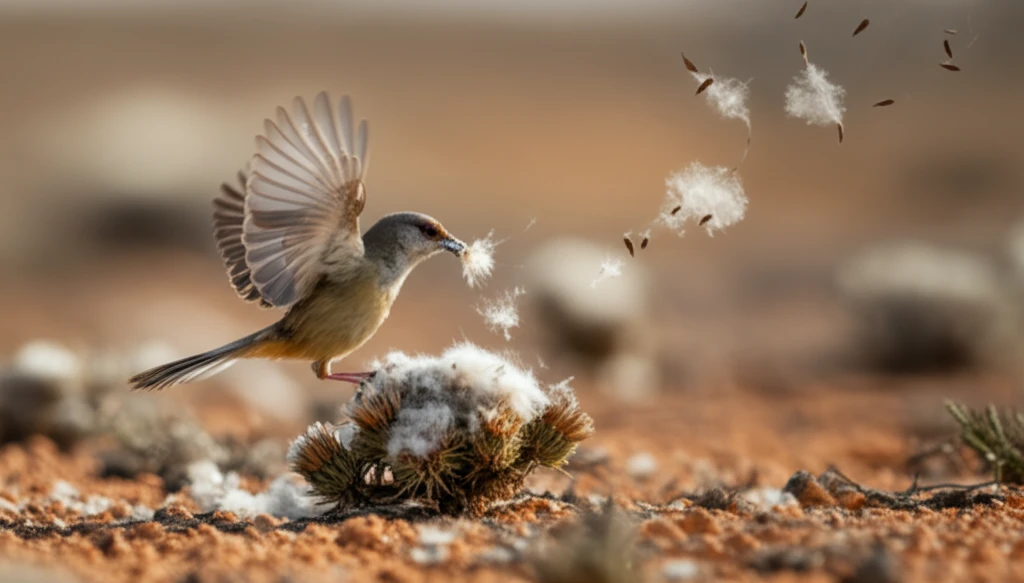
Nest Sabotage: When Cute Birds Become Seed-Thieving Villains!
"Discover the surprising twist in a South African bird-plant 'mutualism'—are these fluffy nests built on betrayal?"
In the vibrant landscapes of ecological communities, interspecies interactions often seem like harmonious partnerships. Mutualism, where different species provide benefits to each other, is a common theme. Yet, beneath the surface of these seemingly altruistic relationships, unexpected freeloaders and saboteurs can thrive.
A fascinating study from the Royal Society Open Science throws a wrench into our understanding of mutualism by examining the relationship between birds and plants in South Africa. The study focuses on several bird species that utilize fluffy Eriocephalus seed material for nest construction, a behavior initially thought to aid in seed dispersal for the plant. Is this a helpful arrangement, or is something more complex at play?
The Karoo prinia (Prinia maculosa), a common bird in South Africa, takes center stage. These birds invest heavily in gathering Eriocephalus material for their nests, raising questions about the true nature of this bird-plant interaction. Are prinias essential partners in seed dispersal, or are they disrupting the plant's reproductive strategy for their own benefit?
The Fluffy Heist: How Prinias Choose Fluff Over Seeds

Researchers meticulously observed the Karoo prinias and found something unexpected: the birds actively avoided gathering seeds. Although prinias spent significant time and effort collecting Eriocephalus material, their nests contained only a handful of seeds on average. The study's numbers speak volumes: a typical prinia nest contained a mere 6.6 seeds, while boasting fluff from approximately 579 seeds.
- Selective Gathering: Prinias actively picked at the fluff, at times holding the seed heads with their feet to avoid picking them up.
- Dropped Seeds: On several occasions, researchers observed prinias dropping seed heads, effectively losing their gathered fluff in the process.
- Nest Composition: The base of prinia nests was primarily composed of Eriocephalus fluff, with nest-wall thickness varying due to the fluff placement.
The Verdict: A Relationship More Complicated Than Mutualism
The research illuminates a key point: the fitness outcomes for Eriocephalus plants depend on the specific bird species involved. While Karoo prinias seem to be freeloaders, focusing on fluff rather than seed dispersal, other birds might play a more beneficial role in the relationship. This study underscores the importance of looking closely at ecological interactions and understanding that mutualism is not always a straightforward, universally beneficial arrangement.
